 Should Iran now be considered a major market for student recruitment? With a growing, intelligent and highly motivated student population, and the recent easing of trade sanctions and government restrictions on international education, the country’s importance to recruiters is growing, with government officials estimating that as many as 60,000 Iranian students are currently studying abroad.
Should Iran now be considered a major market for student recruitment? With a growing, intelligent and highly motivated student population, and the recent easing of trade sanctions and government restrictions on international education, the country’s importance to recruiters is growing, with government officials estimating that as many as 60,000 Iranian students are currently studying abroad.
Coupled with a recent surplus of applicants for domestic postgraduate positions, it’s clear that demand for international education in the country is only going to increase. For those attempting to target digital marketing initiatives towards Iranian prospects, however, establishing an online presence in the country is not without its challenges, with internet restrictions complicating university efforts to reach eligible recruits effectively.
So how can schools gain a foothold in this exciting market? Read on to find out more about the current higher education landscape in Iran, as well the unique digital and cultural landscape schools need to navigate in order to attract Iranian students.
The Recent Rise of Higher Education in Iran: A Brief History for Recruiters
The growth of higher education in Iran over the past few decades has been nothing short of staggering, and the story behind it has been quite fascinating. In 1970, just 67,286 students were enrolled in university study. By 2014, that number had grown almost 6,500%, with 4,367,901 students in the country’s tertiary education system.
An expanding youth population was the main factor behind increased demand, but government intervention has played a crucial role in helping to make higher education more widely available. Prior to 1984, Iran had just eighty-four public universities to serve its vast population. To remedy this, the government supported the establishment of a new, non-profit private institution known as Islamic Azad University, which established over 400 campuses across the country, many in smaller towns or regions that would not have had easy access to education. Today, Islamic Azad University serves over 1.7 million students.
Another crucial development was the establishment of Payam Nur University, a state-owned institution which offers distance learning programs to students in remote regions, with an estimated 800,000 students. Between them, PNU and IAU account for over 50% of Iran’s student population. New independent private universities also received government assistance, helping facilitate more rapid expansion, with 304 institutions opening their doors since 2005.
Iran’s Postgraduate Surplus and Opportunities for International Recruitment
While Iran’s current university system provides plenty of opportunity for undergraduate study, the boom in university graduates has created some issues. EDUSTAT now estimates that the percentage of Iran’s labour force with university degrees has now grown to 12.85%, higher than any other Middle Eastern country apart from Israel.
This has led to an increasingly competitive employment market, as well as a huge increase in demand for postgraduate education. Unfortunately, Iran has had difficulty serving the needs of postgraduates as efficiently as its undergraduates, with the Washington Post reporting that only 60,000 of 900,000 applicants for master’s degrees in Iran were accepted, while just 6,000 out of 127,000 PhD candidates found a suitable programme.
It is this market where the potential for international student recruitment in Iran is strongest. The British Council estimates that there will be as many as 26,000 students in postgraduate study by 2024 in six markets alone (Australia, Canada, Germany, Japan, United Kingdom, and the USA). Iranian graduates also make highly desirable recruits. A report from Washington Institute researcher Steven Dittto found that of the 8,700 Iranian students currently enrolled in schools in the United States, for example, 75% study STEM subjects, mostly in doctoral programs, with a particularly high proportion (56%) studying engineering.
Personalising Your School’s Website Content for Iranian Students
Recruiters seeking to take advantage of these new opportunities might find that using direct, personalised tactics is a good approach. For many Iranians, the prospect of studying abroad is very much a new possibility, and providing prospective recruits with detailed information about entry requirements, visa information, scholarships and financial aid, and course options is vital to attracting their interest. Grouping this information in a dedicated section on your website will make it easier to find, and greatly increase your chances of attracting potential leads.
Example: The University of Hertfordshire has dedicated web pages for Iranian students, which include country-specific entry requirements, visa information, and contact details for local agents.
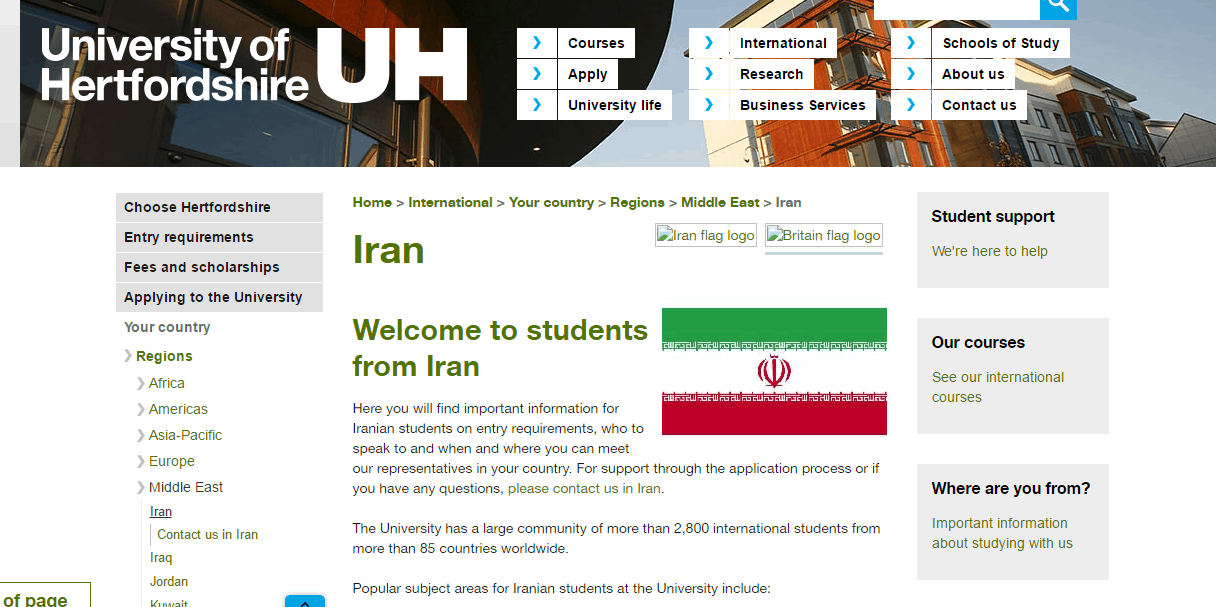
As well as providing detailed information about your application process, it’s important for recruiters to paint your campus as a welcoming environment for Iranian students, who may be apprehensive about moving to a country with a radically different culture. Highlighting any existing Iranian presence at your school, such as societies and services which cater to Persian culture, will help make applicants feel more at ease about managing the transition.
Example: On its dedicated section for prospective Iranian students, the University of Sheffield includes information about a number of student societies, including the Iranian Society, Persian Society, and the Iranian Children’s Education Society, which provides facilities for the children of Farsi speaking students to receive Iranian education during their stay in the country.
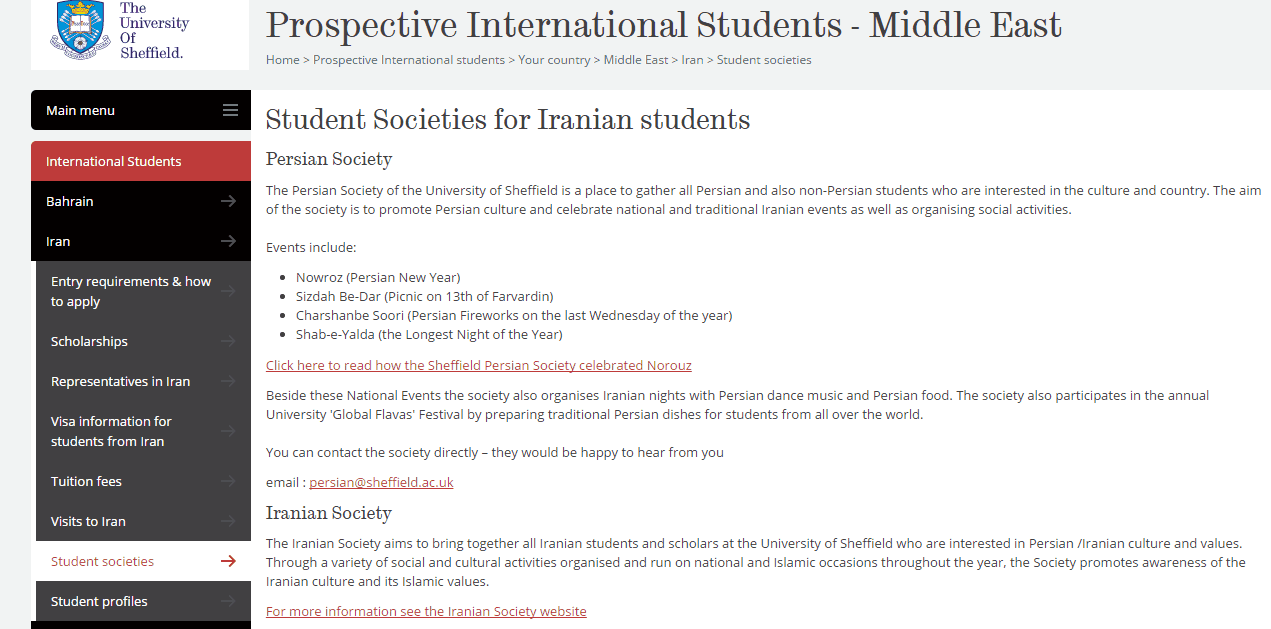
Encouraging your current Iranian students to contribute to your website can also provide you with valuable content to appeal to recruits in the country, providing them with a snapshot of what life is like at your school from the perspective of someone from their own culture. This can be done very effectively in a variety of ways, including student and alumni profiles, testimonials, and blogs.
Example: In addition to detailing student services for Iranians, the University of Sheffield have also invited students to contribute blogs in the past, translating many of the posts into Farsi in order to reach even more prospective recruits.

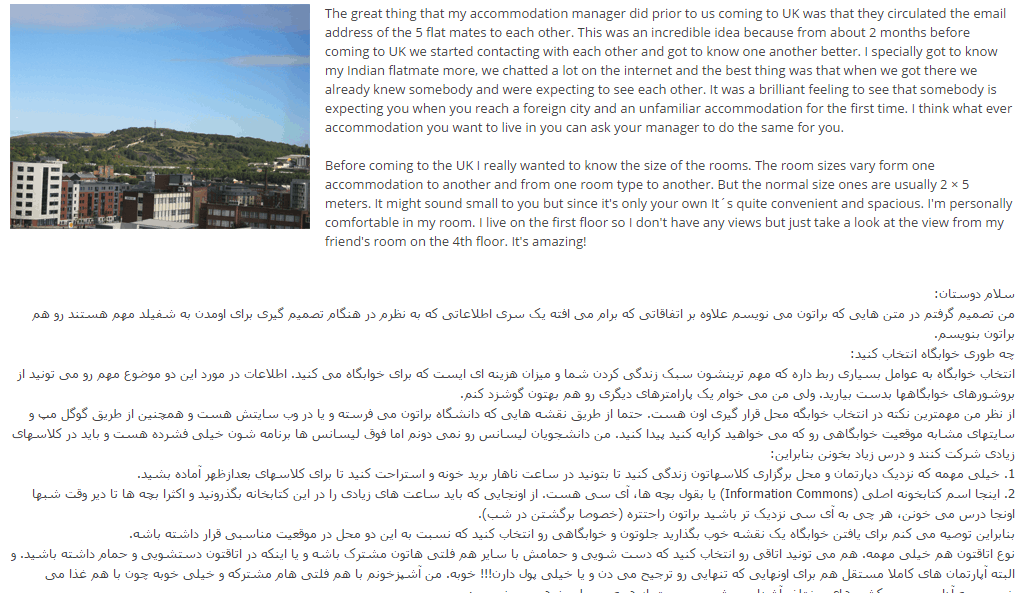
Social Media Marketing for Schools Targeting Iranian Students
While optimising your website content for Iranian recruits requires similar tactics to those employed in other international markets, establishing a social media presence is more complicated. Many of the larger global sites, including Facebook, Twitter and Google, are banned in the country. Despite this, a large proportion of Iranian citizens continue to access the sites through VPN connections.
Many prominent Iranian public figures have Twitter accounts, while SimilarWeb ranks Google and Facebook as the 1st and 9th most visited sites in the country respectively. This means that while schools should not necessarily use these channels to target Iranians leads specifically, they could still see prospective students attempt to connect with them through these sites.
Interestingly, one social media giant which has escaped an outright ban is Instagram, although the site employs intelligent filtering to block certain accounts and photos. As a result, Instagram is one of the most popular sites in the country, particularly among young people, with medium.com estimating that around 7.5 million Iranians aged between 16 and 35 use the photo sharing platform.
For school’s looking to create higher education social media marketing initiatives directed towards Iranian students, Instagram is probably the best place to start. Highlighting the presence of current students from the region, events on your campus which celebrate Persian culture, and Iranian student societies can all be effective ways of reaching Iranian Instagram users.
Example: MIT’s Student Life Instagram is controlled by a different student each week, and does a great job of highlighting the many diverse cultures on campus. As you can see, this profile of an Iranian student, Amir Mashalla, attracted a lot of engagement, with 220 likes and a number of comments from Iranian users.
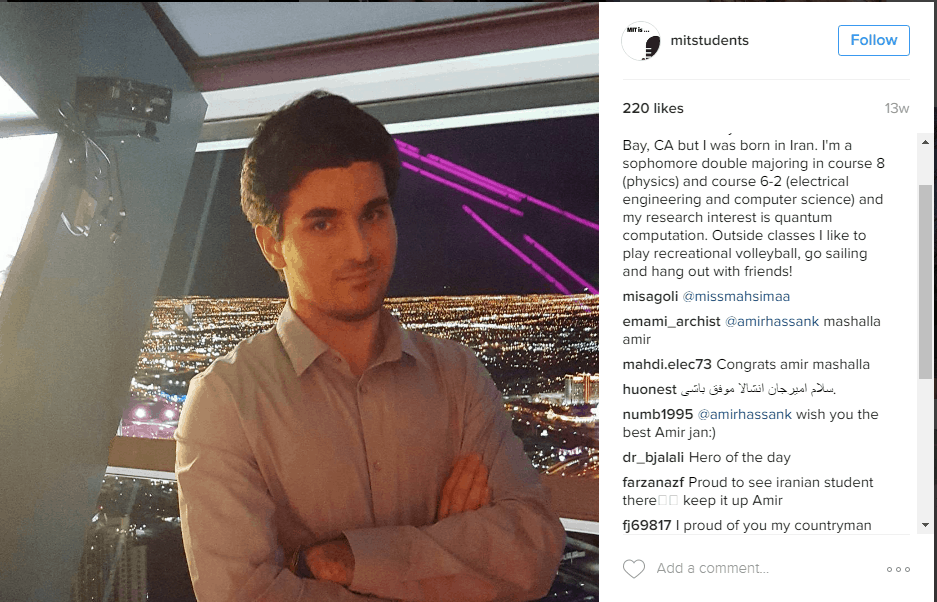 Iran also has a number of local sites which serve as substitutes for banned international platforms. The most popular of these is Facenama, which boasts over 7.3 million daily unique visitors according to W3Snoop. One of the main factors behind the site’s popularity is that it has a very similar interface to Facebook, as you can see from the snapshot below:
Iran also has a number of local sites which serve as substitutes for banned international platforms. The most popular of these is Facenama, which boasts over 7.3 million daily unique visitors according to W3Snoop. One of the main factors behind the site’s popularity is that it has a very similar interface to Facebook, as you can see from the snapshot below:
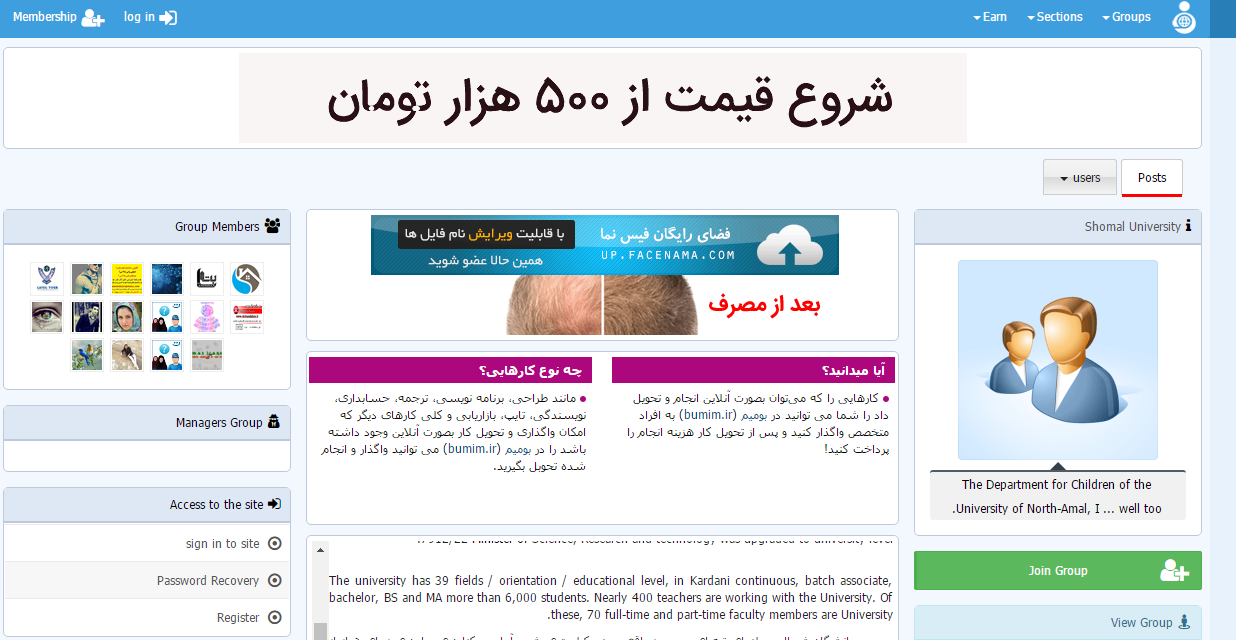
The site requires an Iranian IP address to create an account, and as a result there are currently very few international universities with any kind of presence there. However, this could change as links with international institutions continue to grow.
Another site which recruiters might find useful is Aparat, which is the Iranian equivalent of YouTube. Unlike Facenama, international schools already actively use the site to post video content promoting their programs and campus facilities to prospective students, although they are often posted through educational agencies.
Example: This recruitment video from the University of Bologna appears on Aparat. The school used an Iranian educational agency which specialises in Italian schools, whose page is shown in the snapshot below. Agencies are a common way for western schools to reach prospective Iranian recruits.

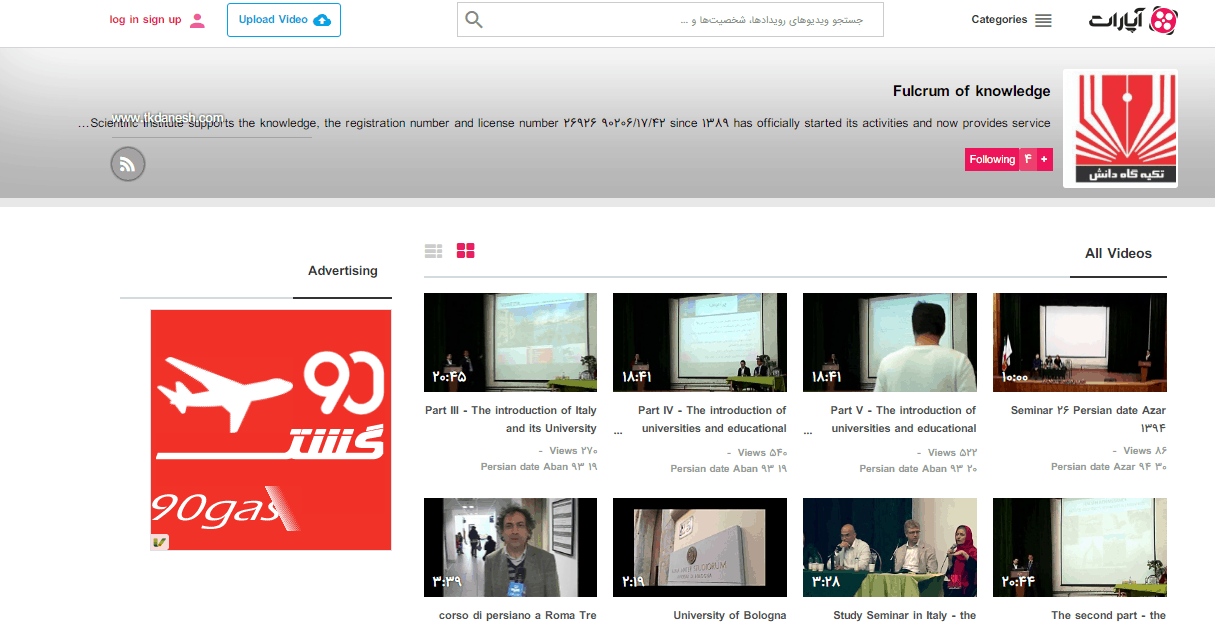
Navigating Iranian Government Policies on International Student Recruitment
If you’re looking to establish a recruitment presence in Iran for the first time, there are a number of things to be mindful of. Most importantly, international institutions need to be accredited by the Ministry of Science, Research, and Technology in order to legally access the Iranian student market. Accredited schools are also evaluated and grouped into different categories based on their quality.
To better navigate the market and improve their education lead generation prospects, many international institutions also make use of Iranian recruitment agencies. These agencies are only authorised to recruit students for a maximum of 3 countries, and as a result tend to specialise in specific regions. Recruitment agencies are regulated by the Iranian Society of Student Recruitment Initiatives (SSRI), which currently has 191 members.
Example: St David’s Catholic Sixth Form College, a private secondary school in Wales, uses a licensed Iranian education agent.

In addition, while the government are keen to establish more international education links, they remain very conscious of a ‘brain drain’ effect, which has been a huge issue for Iran in recent years. Speaking in January 2014, Science Minister Reza Faraji Dana said that “About 150,000 highly talented people emigrate from Iran every year, equalling an annual loss of $150bn to the economy.” Naturally, the government are anxious to ensure that the current surplus of students seeking postgraduate education won’t exacerbate the problem.
As a result, many of the initial moves made by the government in the wake of the relaxing of trade restrictions earlier this year have been focused on establishing co-operative partnerships for doctoral programs, in which candidates divide their studies between Iranian and international institutions. Agreements like this have already been reached with universities in several countries, including France, Switzerland, Slovakia, and Sweden. Schools who can establish these sorts of links may find it easier to gain access to the market.
In many ways, Iran is still very much new terrain for international recruiters, and schools can expect the best practices for operating in this market to change quickly as the country’s relationship with the wider educational world continues to develop. Even the current social media restrictions may be eased at some point, with many government officials favoring unblocking popular sites, including President Hassan Rouhani.
For schools, this means constantly monitoring and updating your recruitment activities in order to stay ahead of the game. But with a potential market of over 800,000 highly qualified candidates, the extra effort might well be worth it.






